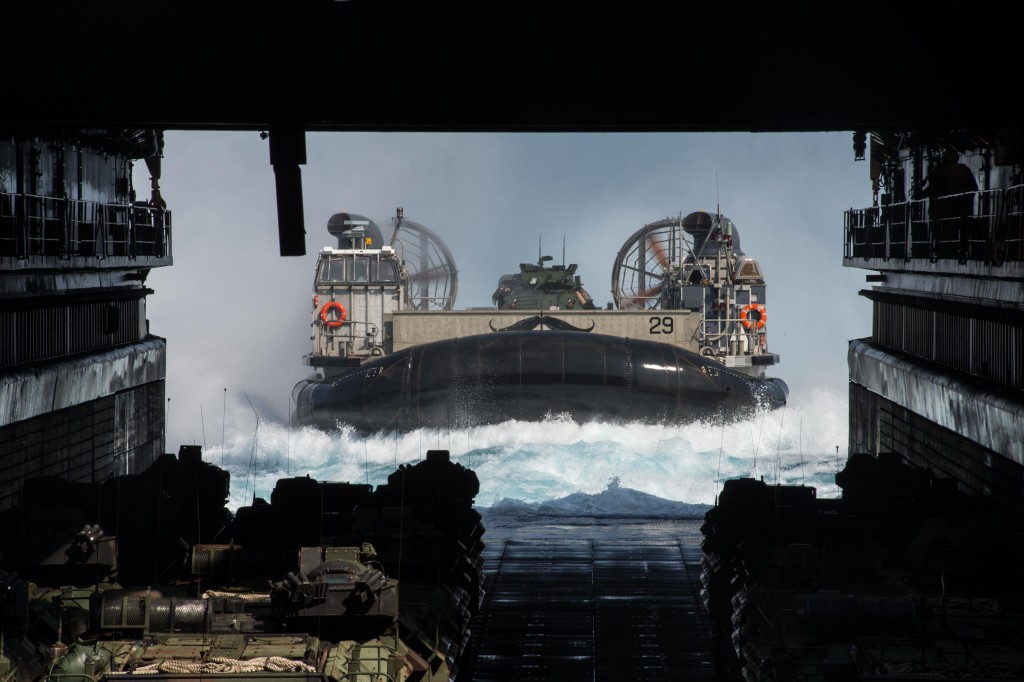 This post is a contribution to a series leading to ASPI’s Future Surface Fleet Conference from 30 March to 1 April 2015. Registration closes 23 March.
This post is a contribution to a series leading to ASPI’s Future Surface Fleet Conference from 30 March to 1 April 2015. Registration closes 23 March.
Recently, the US Sea Services (Navy, Marines, Coast Guard) released their new strategy. Called
A Cooperative Strategy for 21st Century Seapower, it updates the
previous version of 2007. It’s not only much more comprehensive and specific than its predecessor, but also raises some important issues for Australia’s own strategic and defence policy, particularly in the maritime domain.
Strategically, it recognises the ‘rising importance of the Indo-Asia-Pacific region’. The use of the term ‘Indo-Asia-Pacific’ reflects the growing recognition of the two oceans forming an increasingly interconnected strategic theatre. And the document reaffirms the basic pillars of the US naval ‘rebalance’ towards this part of the world, such as the forward deployment of 60% of Navy ships and aircraft by 2020. Interestingly, it also announces that the US Coast Guard will ‘work with regional partners and navies using joint and combined patrols, ship-rider exchanges, and multinational exercises’. Littoral Southeast Asian countries, in particular, will welcome this element of the strategy, given that the development of more professional Coast Guards are critical for their efforts to counter Chinese coercion through a combination of fishing vessels and ‘white’ and ‘grey’ hulls.
Moreover, while the 2007 version didn’t mention China at all, the new strategy states that China’s naval expansion ‘into the Indian and Pacific Oceans presents both opportunities and challenges’. It recognises that Beijing has generally used its growing naval power positively to contribute to global and regional maritime stability. But it also emphasises that
China’s naval expansion also presents challenges when it employs force or intimidation against other sovereign nations to assert territorial claims. This behaviour along with a lack of transparency in its military intentions, contributes to tension and instability, potentially leading to miscalculation or even escalation.
Consequently, the strategy paper vows that the
US Sea Services, through our continued forward presence and constructive interaction with Chinese maritime forces, reduce the potential for misunderstanding, discourage aggression, and preserve our commitment to peace and stability in the region.
In short, China’s naval expansion is a serious geopolitical challenge for the US military. Accordingly, the document emphasises the importance of ensuring ‘all domain access’ for American forces to operate in anti-access/ area-denial environments. That’s a clear reference to China’s significant investment in military capabilities to target forward-deployed US forces.
From an Australian perspective, the new strategy is both positive and challenging. The good news is that the US remains committed to the ‘rebalance’ through a significant and enhanced forward military presence in our extended region. Australia has a fundamental interest in continued US military engagement. And as
observers have noted, unlike the 2007 document, this one actually links strategy with capabilities and funding requirements. As well, the strategy paves the way for deeper naval cooperation and interoperability between the US and its allies, including Australia, in order to ‘increase effective naval presence, strategic agility, and responsiveness’.
So it’s reasonable to expect our American ally to ask what role Australia’s military, particularly its naval forces, will be willing to assume to support US sea power in the Indo-Pacific region. That will require some hard thinking, not only on the part of Navy and the ADF as a whole, but ultimately by government.
For one, Navy is in the process of acquiring new and larger ships, including air warfare destroyers (AWDs), amphibious ships (LHDs) and new frigates. It’s also expected that Navy will increasingly seek to be able to deploy an integrated naval battle group. But it’ll be important to explain what this enhanced naval capability is supposed to achieve, including in a US coalition context, and how it’s supposed to operate effectively in more contested maritime environments. After all, the fleet won’t dramatically grow in numbers and will remain fairly small in terms of deployable hulls. But, as the new US strategy points out, the US will be looking for ‘strengthening alliances through improved interoperability, more integrated operations, and increasingly complex exercises and training’.
Operating in denied environments, including as part of American-led coalitions, will pose major challenges for Navy and the rest of the ADF. It'll also require much greater integration and interoperability of platforms, sensors, weapons and systems. And, to some degree, the ADF would have to ‘mirror’ investments the US strategy foresees for American naval forces, including advanced anti-submarine warfare, a family of integrated unmanned undersea vehicles, long-range stand-off weapons, countermeasures against ‘smart mines’, and directed-energy and electromagnetic railguns. Finally, in contested environments the ADF would need a truly joint approach that integrates Air Force, Army and Special Forces into naval operations. Projecting Australia’s sea power alongside our US ally will surely demand a transformed ADF.
Benjamin Schreer is a senior analyst at ASPI. Image courtesy of US Navy.
 Print This Post
Print This Post